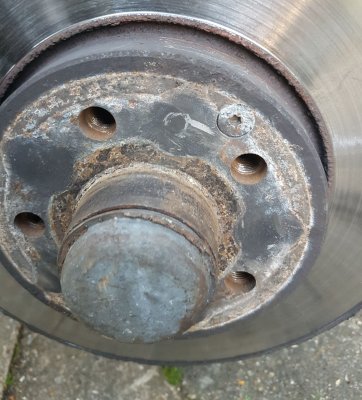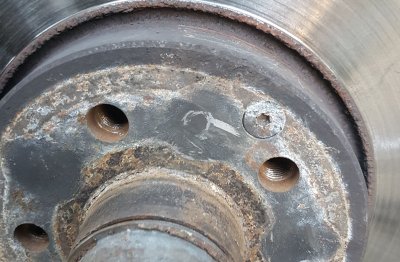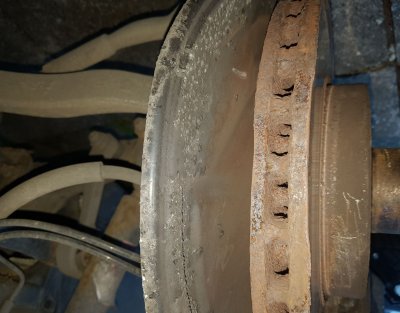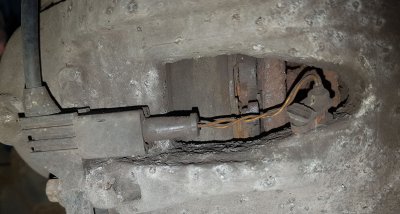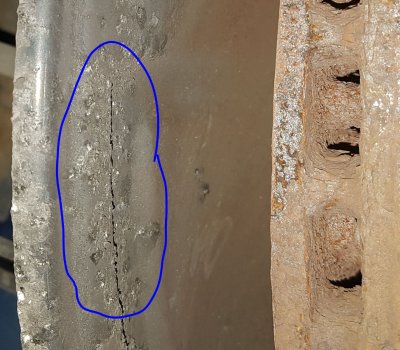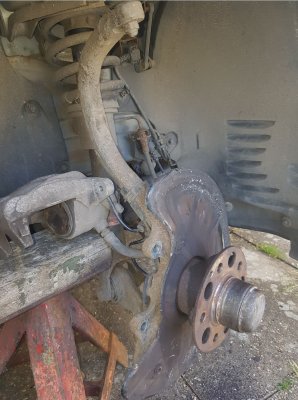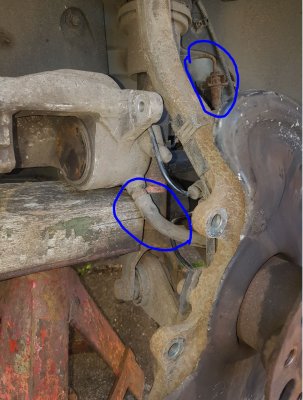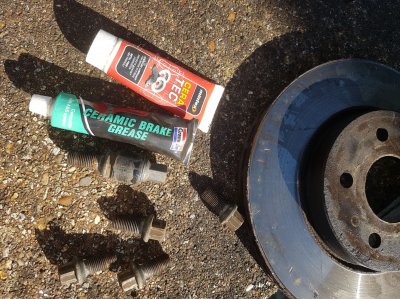Success removing both screws!
1. Started with drivers's side [that I tried imperial hex (was able to apply a significant torque but no success) and T30 (which did not go in) before]. This time I used WD-40 and actually hammered T30 bit in. And it did move! Was able to unscrew it by about 2mm and then it was dead stuck, T30 lost grip. Hammering T30 in again, hammering in various other hex bits would not enable me to apply a sufficiently huge torque to remove it. At this point the car became undriveable as with that screw sticking by 2mm cant put the wheel on and then drive.
2. After much trying I decided to try the other side. Not least because I thought if I manage to get the screw on the other side out, seeing the devil and knowing it might help me defeat it. On the passenger side the screw did not look so corroded and I was using T30 from the start (by hammering it in). I was able to dislodge the screw. When it was about 2mm out it was going tougher and requiring much greater torque than dislodging it! However I managed to get it out in just one minute.
3. Them I returned to driver's sides. I was trying to drill with various drill bits and trying to hummer in various bits. Eventually I manged to hammer 5mm hex bit about 6mm in and it was very tight. This enabled me to finally fully undo that screw! I still have to separate the 5mm hex bit and the screw!
So with both screws out and wheels back on the cars is driveable. Tomorrow I will be ordering new
brake pads, new discs and new disc-screws.
Parts wise genuine
brake pads are quite well priced at £61.58 (
Genuine Mercedes-Benz W211 E-Class FRONT Brake Pads and Sensor A0044208720 NEW! | eBay), not sure about the discs though at £119.26 (
Genuine Mercedes-Benz W211 E-Class FRONT Brake Discs A2114210812 NEW | eBay) .
Are Mercedes discs better than ATE/PAGID?
I understand brake pads come with just two new screws rather than four. So I put the new ones on the bottom pins and reuse the old ones (with thread lock) for the top pin? What torque should be for these screws?
With regard to the caliper holder screws (the bigger screws that need to be undone to change the discs), do I need to order new ones or just reuse the old ones? What torque should be used for these?

 Maybe time to leave it alone. Wrong tools and lack of technical skills when working with brakes will not end well.
Maybe time to leave it alone. Wrong tools and lack of technical skills when working with brakes will not end well.